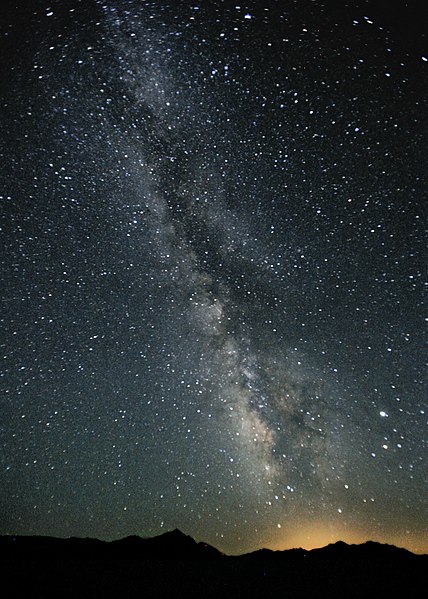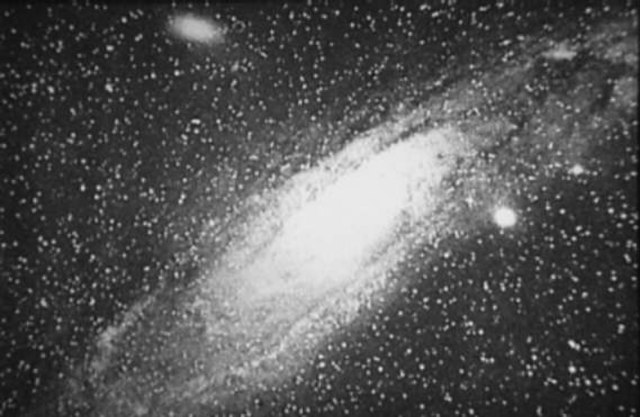The Milky Way is the galaxy that includes the Solar System, with the name describing the galaxy's appearance from Earth: a hazy band of light seen in the night sky formed from stars that cannot be individually distinguished by the naked eye.
The Galactic Center as seen from Earth's night sky (featuring the telescope's laser guide star). Listed below is Galactic Center's information.
The Milky Way as seen from a dark site with little light pollution
Photograph of the "Great Andromeda Nebula" from 1899, later identified as the Andromeda Galaxy
Bright X-ray flares from Sagittarius A* (inset) in the center of the Milky Way, as detected by the Chandra X-ray Observatory.
A galaxy is a system of stars, stellar remnants, interstellar gas, dust, and dark matter bound together by gravity. The word is derived from the Greek galaxias (γαλαξίας), literally 'milky', a reference to the Milky Way galaxy that contains the Solar System. Galaxies, averaging an estimated 100 million stars, range in size from dwarfs with less than a thousand stars, to the largest galaxies known – supergiants with one hundred trillion stars, each orbiting its galaxy's center of mass. Most of the mass in a typical galaxy is in the form of dark matter, with only a few percent of that mass visible in the form of stars and nebulae. Supermassive black holes are a common feature at the centres of galaxies.
NGC 4414, a typical spiral galaxy in the constellation Coma Berenices, is about 55,000 light-years in diameter and approximately 60 million light-years from Earth.
Photograph of the "Great Andromeda Nebula" by Isaac Roberts, 1899, later identified as the Andromeda Galaxy
The galaxy cluster Abell 1413 is dominated by this cD elliptical galaxy designated Abell 1413 BCG. It has an isophotal diameter of over 800,000 light-years across. Note the gravitational lensing.
NGC 3923 Elliptical Shell Galaxy (Hubble photograph)







